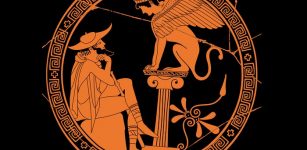Ancient Chaco Was Organized Society Ruled By Women, Study Suggests
AncientPages.com - Using a combination of radiocarbon dating and ancient DNA, researchers show that a maternal dynasty ruled Pueblo Bonito in New Mexico’s Chaco Canyon, for more than 300 years.
Researchers extracted DNA from nine skeletal remains of people buried inside the-so-called ‘room 33’, a burial crypt in Pueblo Bonito, at Chaco Canyon, which was explored in the 1890s.

Chaco Canyon was a hierarchically organized society with leadership inherited through the maternal line.
The crypt that contained 14 burials was unearthed within a 650-room pueblo dated between 800 and 1130.
“This 6.5 by 6.5 foot room was purposely constructed as a crypt for a high-status member of this nascent community and ultimately his lineal descendants,” say researchers in their paper published in Nature Communications.
In one burial, which is considered the richest richest ever found in the American Southwest, was a male in his 40s who died from a lethal blow to the head. He was buried with more than 11,000 turquoise beads, 3,300 shell beads and other artifacts originating from the Pacific Ocean and Gulf of California far from central New Mexico.

Turquoise and shell beads and pendants had been found with the skeletal remains in the crypt. Credits: : Roderick Mickens/American Museum of Natural History
Another individual was buried above this initial interment and a split plank floor placed above them. In the space above, another 12 burials took place over the span of 300 years.
See also:
The ‘Anasazi’ Mystery: Sophisticated Civilization That Disappeared
Sophisticated Masonry In Anasazi Dwelling Ruins At Mesa Verde National Park, Colorado, USA
Tusayan Pueblo Ruins Tell Story Of Ancestral People Who Once Inhabited The Grand Canyon
Researchers examined the mitochondrial genomes of these individuals and found that all of them (both men and women) had the same maternal lineage. They were not only the individuals from the same family, but the inheritance was matrilineal -- through the mother.
"Using DNA sequences from the nuclear genome combined with the radiocarbon dates, we identified a mother-daughter pair and a grandmother-grandson relationship," said Kennett.
"We are not saying that this was a state-level society," said Douglas J. Kennett, head and professor of anthropology, Penn State. "But we don't think it was egalitarian either."
However, considering that most Chacoans were buried outside of the settlement and never with such high quantities of exotic goods, these people were most probably the elite of the Chaco society.
AncientPages.com




















